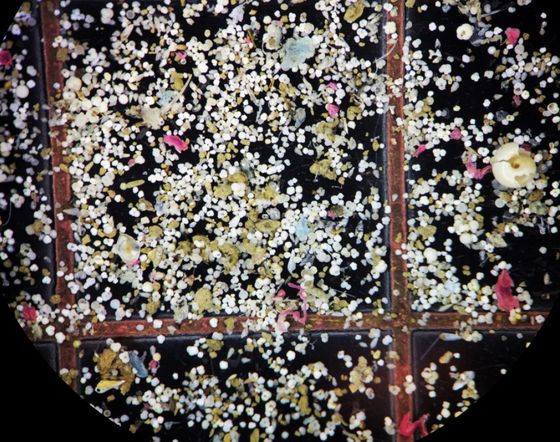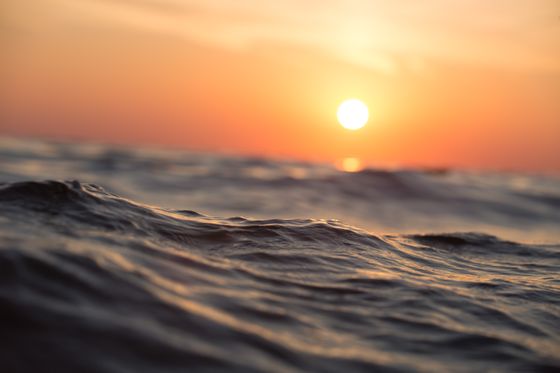Analysis of `` shells of organisms deposited on the seabed '' revealed that the California sea was acidifying more rapidly than estimated

by
The ocean has a role to absorb carbon dioxide in the atmosphere, but increasing carbon dioxide in the ocean causes ocean acidification , affecting many organisms and damaging marine ecosystems. Research team of the United States Oceanic and Atmospheric Administration (NOAA) discovered that California coastal seas are acidifying more rapidly than previously estimated by analyzing `` shells of planktonic foraminifera deposited on the seabed '' Did.
Decadal variability in twentieth-century ocean acidification in the California Current Ecosystem | Nature Geoscience
https://www.nature.com/articles/s41561-019-0499-z
California coastal waters rising in acidity at alarming rate, study finds-Los Angeles Times
https://www.latimes.com/california/story/2019-12-16/ocean-acidification-california
Since the appearance of humans on the earth, the concentration of carbon dioxide in the atmosphere has continued to increase due to the cutting of trees and the use of fossil fuels, but some of the increased carbon dioxide is absorbed by the sea. It has been pointed out that one-quarter of the carbon dioxide released by humans since the industrial revolution has been absorbed by the sea, and the sea has played a role in stopping global warming because it is unknown.
However, as the carbon dioxide concentration in the ocean rises, ocean acidification progresses accordingly and various scientific properties change. For example, marine organisms such as shellfish, sea urchins and corals use marine carbonate ions to make shells and skeletons made of calcium carbonate. However, as ocean acidification progresses, the concentration of carbonate ions decreases and it becomes difficult to form calcium carbonate, so ocean acidification leads to a decrease in the number of coral and shellfish individuals.
Also, ocean acidification has been pointed out to weaken 'the ability of fish to sniff predators', and there seems to be a risk of changing the behavior of animals.
Oxidation of seawater due to global warming, fish may lose survival instinct International News: AFPBB News

In recent years, awareness of ocean acidification has become widespread, but researchers still do not fully understand this issue. Ocean acidification has been the subject of research in the last few decades, and since scientists have started recording and monitoring, it is still shallow, so there is little data available.
Especially in the coastal area of California, many people have suspected that it may have been acidifying more rapidly than other waters, but due to lack of historical data, I didn't know it was clear. Therefore, the NOAA research team decided to collect and analyze “flourous foraminifera shells deposited on the seabed” as a creative way to measure the rate of ocean acidification.
Foraminifera is a group of small amoeba-like protozoa with calcareous shells, which are divided into benthic foraminifera that live mainly on the seabed and planktonic foraminifera that live near the surface of the ocean as plankton. The research team collected about 2000 planktonic foraminifera shells that fell on the seabed after death from the Santa Barbara Basin, which is relatively difficult to damage by other animals, and measured the thickness of the shells with a tool such as a microscope And I examined how much change was seen by age.
The following images are the collected samples observed with a microscope. It looks almost like sand grains, but most of the colorful grains are foraminifera shells collected from the seabed.

by NOAA
Like corals and shellfish, foraminiferal shells are made of calcium carbonate, making it harder to make shells as ocean acidification progresses. As a result of research by the research team, it was found that the seawater along the coast of California had a
NOAA researcher Emily Osborne , the lead author of the paper, points out that the thickness of the foraminifera shell has recorded climate changes such as the El Nino phenomenon and is linked to the Pacific Decadal Oscillation . “The seabed sediments can be read like a book page. The Santa Barbara Basin has beautifully preserved layered records on the seabed that allow the past sea to be reconstructed in high resolution. 'Osborne said.
According to Osborne, “Ocean has played an important role in mitigating global warming by absorbing carbon dioxide from the atmosphere, but it may not be able to absorb carbon dioxide any more. From the results of many studies, including this one, there is no doubt that it is important to reduce the amount of carbon dioxide. '

Related Posts:







